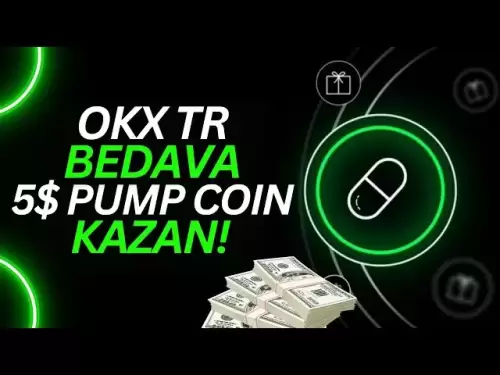-
 Bitcoin
Bitcoin $117400
-0.46% -
 Ethereum
Ethereum $3768
0.60% -
 XRP
XRP $3.551
2.09% -
 Tether USDt
Tether USDt $1.000
0.00% -
 Solana
Solana $203.2
11.30% -
 BNB
BNB $770.9
1.92% -
 USDC
USDC $0.9999
0.01% -
 Dogecoin
Dogecoin $0.2709
-0.02% -
 Cardano
Cardano $0.9024
4.49% -
 TRON
TRON $0.3139
0.60% -
 Hyperliquid
Hyperliquid $45.60
-1.41% -
 Stellar
Stellar $0.4730
-1.34% -
 Sui
Sui $4.025
2.15% -
 Chainlink
Chainlink $19.79
2.19% -
 Hedera
Hedera $0.2724
-2.39% -
 Avalanche
Avalanche $25.93
3.05% -
 Bitcoin Cash
Bitcoin Cash $524.0
-1.83% -
 Shiba Inu
Shiba Inu $0.00001558
0.50% -
 Litecoin
Litecoin $116.7
-0.30% -
 UNUS SED LEO
UNUS SED LEO $8.996
0.00% -
 Toncoin
Toncoin $3.334
1.83% -
 Polkadot
Polkadot $4.506
0.34% -
 Uniswap
Uniswap $10.99
4.83% -
 Ethena USDe
Ethena USDe $1.001
0.03% -
 Pepe
Pepe $0.00001461
3.17% -
 Monero
Monero $320.3
-1.01% -
 Bitget Token
Bitget Token $4.935
0.36% -
 Dai
Dai $0.9998
0.00% -
 Aave
Aave $322.4
-1.25% -
 Bittensor
Bittensor $455.6
9.33%
How does custody work for a spot ETH ETF?
A spot ETH ETF holds actual Ether, offering investors regulated exposure to ETH through traditional exchanges without needing direct crypto ownership.
Jul 19, 2025 at 12:57 am
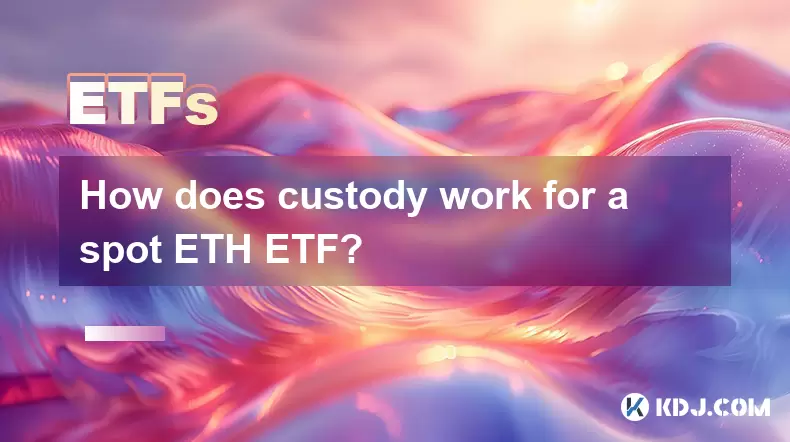
What is a Spot ETH ETF?
A spot ETH ETF is an exchange-traded fund that directly holds Ether (ETH) as its underlying asset. Unlike futures-based ETFs, which track the price of ETH through futures contracts, a spot ETH ETF owns the actual cryptocurrency. Investors gain exposure to ETH without directly purchasing or storing the asset themselves. The ETF is traded on traditional stock exchanges, offering regulated and accessible exposure to institutional and retail investors alike.
The core mechanism of a spot ETH ETF involves an authorized participant (AP) acquiring ETH and depositing it with the fund’s custodian. In return, the AP receives ETF shares that can be traded on the open market. When shares are redeemed, the process reverses — the AP returns ETF shares and receives the equivalent amount of ETH.
Role of Custody in a Spot ETH ETF
Custody is a critical component of a spot ETH ETF structure. Since the fund must hold actual ETH to back its shares, a trusted custodian is responsible for securely storing the digital assets. Custodians ensure the safety, transparency, and regulatory compliance of the underlying ETH holdings.
The custody process involves several key steps:
- Private key management: The custodian must maintain secure control over the private keys associated with the ETH wallets. This often involves cold storage solutions, multi-signature protocols, and institutional-grade wallet infrastructure.
- Auditing and transparency: Custodians must provide regular proof of reserves to verify that the ETH backing the ETF is fully collateralized and not being double-counted or lent out.
- Insurance coverage: Many custodians offer insurance policies to protect against theft or loss, ensuring investor assets remain secure even in the event of a breach.
How ETH is Acquired and Stored by the Custodian
The process of acquiring and storing ETH for a spot ETH ETF involves multiple parties and precise execution to maintain trust and compliance.
- Authorized participants (APs) purchase ETH from the open market or directly from liquidity providers.
- The AP transfers the ETH to the designated custodial wallet controlled by the ETF’s custodian.
- Upon verification of receipt, the custodian confirms the deposit to the ETF issuer.
- The ETF issuer then mints new shares equivalent to the value of the deposited ETH and allocates them to the AP.
The custodian stores the ETH using institutional-grade security protocols, including:
- Cold storage solutions: The majority of the ETH is stored offline in hardware wallets or air-gapped systems.
- Multi-signature technology: Transactions require multiple approvals to execute, reducing the risk of unauthorized access.
- Third-party audits: Independent firms regularly audit the custodian’s holdings to confirm that the on-chain balances match the ETF’s liabilities.
Redemption Process and Custody Implications
When an authorized participant wishes to redeem ETF shares for ETH, the custody process works in reverse.
- The AP submits a redemption request to the ETF issuer.
- The issuer verifies the request and instructs the custodian to release the corresponding amount of ETH.
- The custodian initiates the transfer from its secure wallet to the AP’s designated wallet address.
- Once the transaction is confirmed on the Ethereum blockchain, the ETF issuer burns the redeemed shares.
Throughout this process, the custodian plays a vital role in ensuring the integrity of the redemption. The ETH must be transferred accurately and promptly, and all transactions must be recorded and verified. Custodians also ensure that only authorized redemptions are executed, maintaining the ETF’s structural integrity.
Regulatory and Compliance Considerations
Custody for a spot ETH ETF must adhere to stringent regulatory standards, especially in jurisdictions like the United States where the SEC oversees ETF structures.
- Segregation of assets: The custodian must ensure that the ETH held for the ETF is legally segregated from its own assets and those of other clients.
- Regulatory reporting: Custodians must provide regular reports to regulators and the ETF issuer regarding the status and movement of ETH holdings.
- Compliance with AML/KYC: Custodians must follow anti-money laundering (AML) and know-your-customer (KYC) procedures when handling deposits and withdrawals.
- Tax reporting: The custodian may be required to assist with tax reporting obligations, especially in cases where the ETF is subject to capital gains taxation.
Failure to meet these standards can result in delisting of the ETF, regulatory penalties, or loss of investor confidence.
Security Measures and Risk Mitigation
Given the high-value nature of ETH holdings, custodians implement robust security measures to mitigate risks.
- Hardware wallet integration: Custodians often use enterprise-grade hardware wallets from providers like Ledger, Fireblocks, or Qredo to store ETH offline.
- Multi-party computation (MPC): Some custodians use MPC-based signing protocols to eliminate single points of failure in key management.
- Real-time monitoring: Custodians deploy blockchain explorers and analytics tools to monitor wallet activity and detect anomalies.
- Disaster recovery protocols: Custodians must have redundant systems and backup procedures in place to recover assets in the event of technical failure or cyberattack.
These measures ensure that the custody process remains resilient and trustworthy, even in volatile or adversarial environments.
Frequently Asked Questions (FAQs)
What happens if the custodian is hacked?
If a custodian experiences a security breach, insurance policies typically cover the loss of assets. Additionally, multi-signature and cold storage mechanisms are designed to prevent large-scale theft. ETF issuers and regulators also monitor custodial security closely to mitigate such risks.
Can the custodian lend out the ETH held in the ETF?
No, in a spot ETH ETF, the custodian is not permitted to lend out the ETH unless explicitly authorized and disclosed. Most spot ETF structures require full collateralization, meaning the ETH must remain in custody to back the ETF shares at all times.
How do investors verify that the ETH is actually held in custody?
Investors can verify holdings through third-party audits, blockchain explorers, and transparency reports published by the custodian and ETF issuer. Some custodians provide real-time proof-of-reserves dashboards for public verification.
Are all spot ETH ETFs custodied the same way?
No, custody solutions can vary between ETF providers. Some may use independent custodians, while others partner with established financial institutions or crypto-native custodians. Investors should review the ETF’s prospectus to understand the specific custody arrangements.
Disclaimer:info@kdj.com
The information provided is not trading advice. kdj.com does not assume any responsibility for any investments made based on the information provided in this article. Cryptocurrencies are highly volatile and it is highly recommended that you invest with caution after thorough research!
If you believe that the content used on this website infringes your copyright, please contact us immediately (info@kdj.com) and we will delete it promptly.
- Bitcoin, Trump Media, and a Stock Boost: A New York Minute on Crypto & Politics
- 2025-07-22 15:30:12
- Solana Ecosystem Tokens Surge: Riding the Wave to New Highs?
- 2025-07-22 15:30:12
- Bitcoin, Render Token, and Resistance Levels: A New Yorker's Take
- 2025-07-22 15:50:12
- MoonBull's Whitelist Mania: Your Last Shot at 100x Crypto Gains?
- 2025-07-22 10:30:12
- Meme Coins in 2025: Explosive Gains or Fading Fad?
- 2025-07-22 10:30:12
- Kim Keon-hee Crypto Probe: Scandal Rocks South Korea's Political Scene
- 2025-07-22 10:50:12
Related knowledge
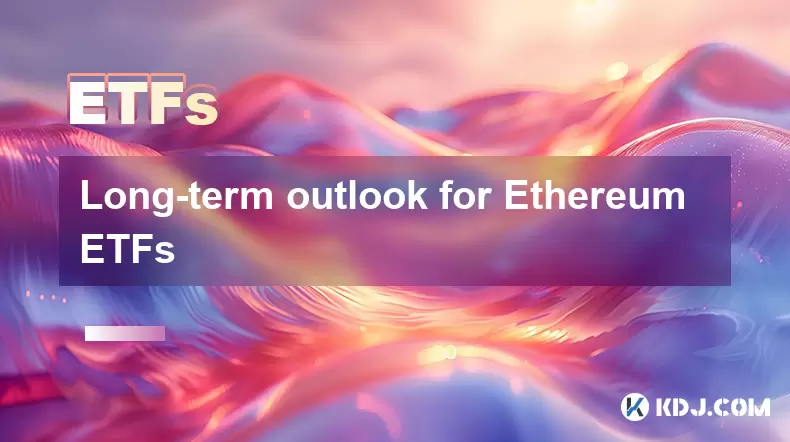
Long-term outlook for Ethereum ETFs
Jul 22,2025 at 06:42am
What Exactly Is an Ethereum ETF?An Ethereum Exchange-Traded Fund (ETF) is a financial product that tracks the price of Ethereum (ETH) and is traded on...
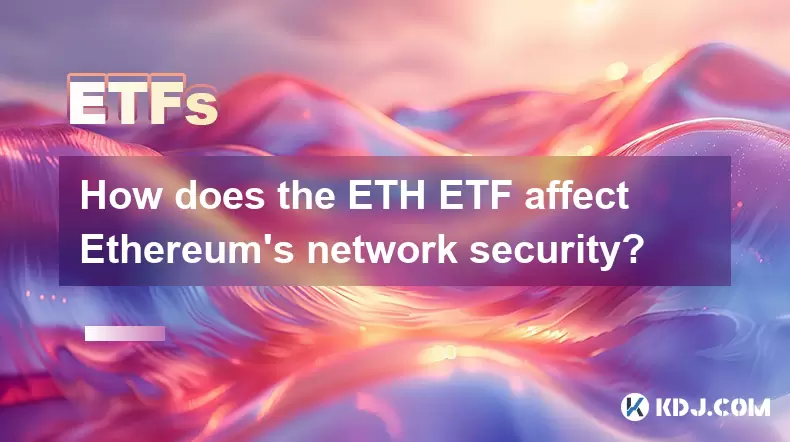
How does the ETH ETF affect Ethereum's network security?
Jul 17,2025 at 01:29pm
Understanding the ETH ETF ConceptAn Ethereum Exchange-Traded Fund (ETH ETF) is a financial product that allows investors to gain exposure to Ethereum ...
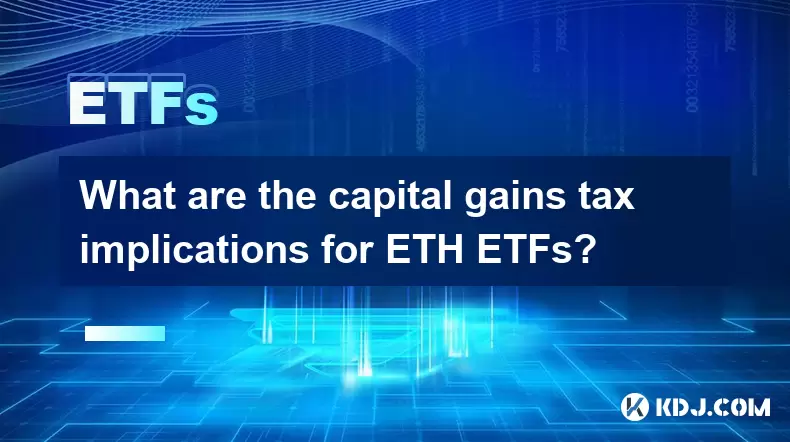
What are the capital gains tax implications for ETH ETFs?
Jul 18,2025 at 08:00am
Understanding Capital Gains Tax in Cryptocurrency InvestmentsCapital gains tax is a tax imposed on the profit realized from the sale of an asset that ...
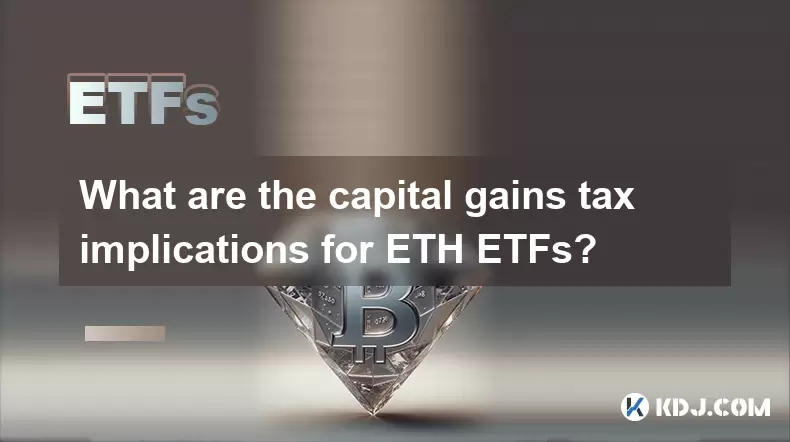
What are the capital gains tax implications for ETH ETFs?
Jul 21,2025 at 11:14am
Understanding ETH ETFs and Their TaxationAn Ethereum Exchange-Traded Fund (ETH ETF) allows investors to gain exposure to Ethereum without directly own...
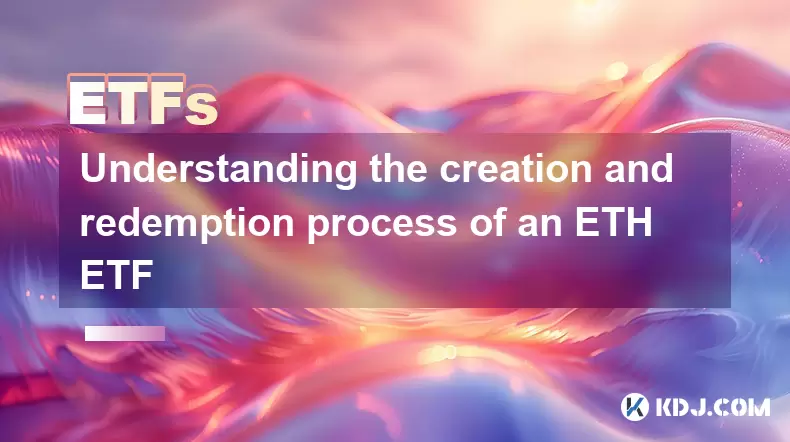
Understanding the creation and redemption process of an ETH ETF
Jul 19,2025 at 07:36am
What is an ETH ETF?An ETH ETF (Ethereum Exchange-Traded Fund) is a financial product designed to track the price of Ethereum without requiring investo...

How to analyze which ETH ETF is the best choice
Jul 19,2025 at 05:01pm
Understanding ETH ETFs and Their RelevanceEthereum Exchange-Traded Funds (ETFs) have emerged as a popular investment vehicle for those seeking exposur...

Long-term outlook for Ethereum ETFs
Jul 22,2025 at 06:42am
What Exactly Is an Ethereum ETF?An Ethereum Exchange-Traded Fund (ETF) is a financial product that tracks the price of Ethereum (ETH) and is traded on...

How does the ETH ETF affect Ethereum's network security?
Jul 17,2025 at 01:29pm
Understanding the ETH ETF ConceptAn Ethereum Exchange-Traded Fund (ETH ETF) is a financial product that allows investors to gain exposure to Ethereum ...

What are the capital gains tax implications for ETH ETFs?
Jul 18,2025 at 08:00am
Understanding Capital Gains Tax in Cryptocurrency InvestmentsCapital gains tax is a tax imposed on the profit realized from the sale of an asset that ...

What are the capital gains tax implications for ETH ETFs?
Jul 21,2025 at 11:14am
Understanding ETH ETFs and Their TaxationAn Ethereum Exchange-Traded Fund (ETH ETF) allows investors to gain exposure to Ethereum without directly own...

Understanding the creation and redemption process of an ETH ETF
Jul 19,2025 at 07:36am
What is an ETH ETF?An ETH ETF (Ethereum Exchange-Traded Fund) is a financial product designed to track the price of Ethereum without requiring investo...

How to analyze which ETH ETF is the best choice
Jul 19,2025 at 05:01pm
Understanding ETH ETFs and Their RelevanceEthereum Exchange-Traded Funds (ETFs) have emerged as a popular investment vehicle for those seeking exposur...
See all articles

























